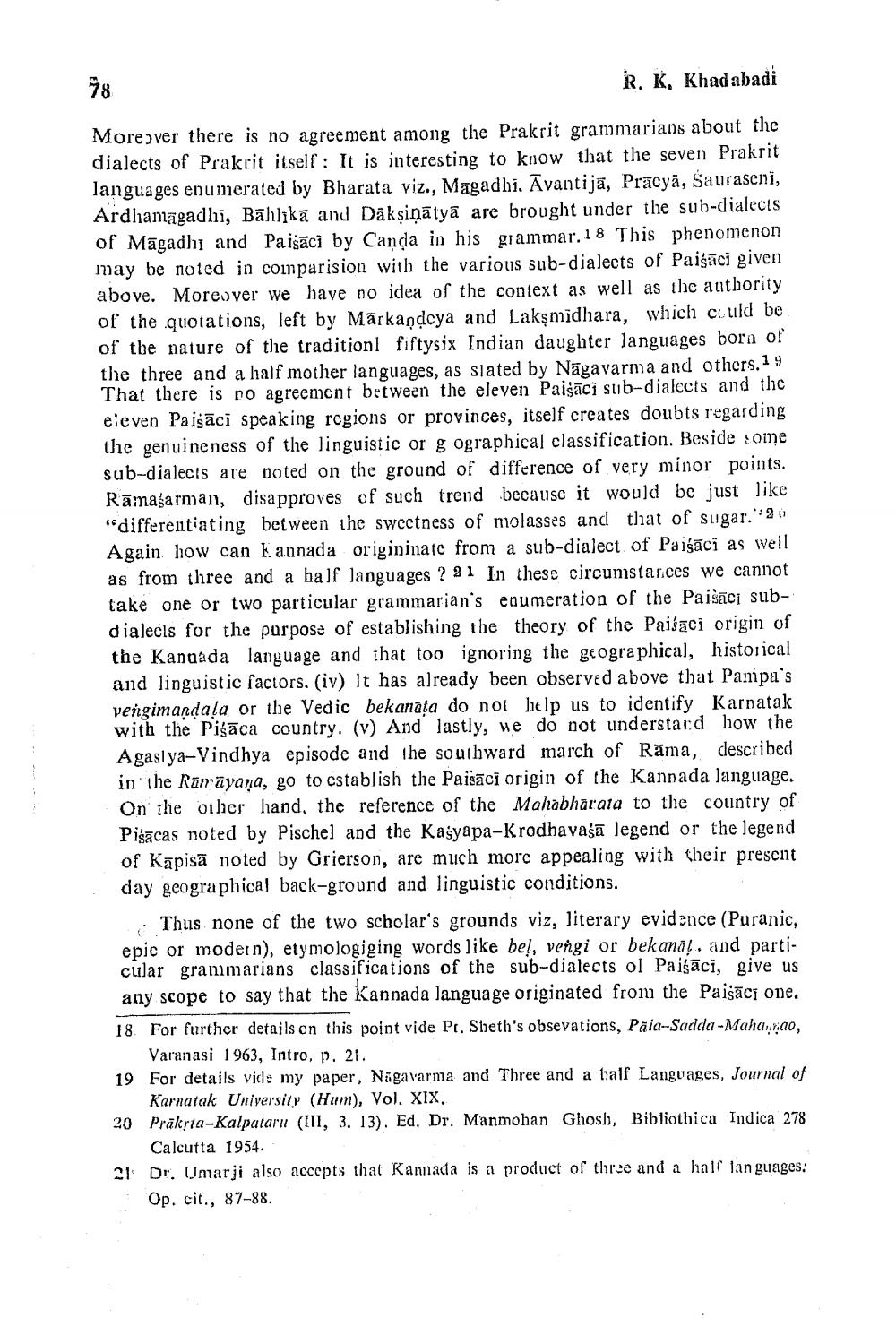________________
M8
R, K, Khadabadi
Moreover there is no agreement among the Prakrit grammarians about the dialects of Prakrit itself : It is interesting to know that the seven Prakrit languages enumerated by Bharata viz., Magadhi. Āvantijā, Pracyā, Sauraseni, Ardhamagadhi, Bāhlikā and Däksinātyā are brought under the sub-dialects of Māgadhy and Paisāci by Canda in his grammar. 18 This phenomenon may be noted in comparision with the various sub-dialects of Paigāci given above. Moreover we have no idea of the context as well as the authority of the quotations, left by Mārkandcya and Lakşmidhara, which could be of the nature of the traditionl fiftysix Indian daughter languages born of the three and a half mother languages, as slated by Nāgavarma and others. 19 That there is no agreement between the eleven Paišāci sub-dialects and the eleven Paigāci speaking regions or provinces, itself creates doubts regarding the genuineness of the linguistic or g ographical classification. Beside some sub-dialects are noted on the ground of difference of very minor points. Rāmašarman, disapproves of such trend because it would be just like "differentiating between the sweetness of molasses and that of sugar. 20 Again how can Kannada origininatc from a sub-dialect of Paisāci as well as from three and a half languages ? 21 In these circumstances we cannot take one or two particular grammarjan's enumeration of the Paisācı subdialecls for the purpose of establishing the theory of the Paisaci origin of the Kannada language and that too ignoring the geographical, historical and linguistic factors. (iv) It has already been observed above that Pampa's vengimandala or the Vedic bekanața do not lielp us to identify Karnatak with the Pigāca country. (v) And lastly, we do not understard how the Agaslya-Vindhya episode and the southward march of Rāma, described in the Rairāyana, go to establish the Paišāci origin of the Kannada language. On the other hand, the reference of the Mahabharata to the country of Pisacas noted by Pischel and the Kasyapa-Krodhavašā legend or the legend of Kāpisā noted by Grierson, are much more appealing with their present day geographical back-ground and linguistic conditions.
Thus none of the two scholar's grounds viz, literary evidence (Puranic, epic or modern), etymologiging words like bel, vengi or bekannt, and particular grammarians classifications of the sub-dialects ol Paisāci, give us any scope to say that the Kannada language originated from the Paišāci one. 18. For further details on this point vide Pr. Sheth's obsevations, Pāia-Saelda-Maharao,
Varanasi 1963, Intro, p. 21. 19 For details vide my paper, Nīgavarma and Three and a half Languages, Journal of
Karnatak University (Hum), Vol. XIX. 20 Prāk,ta-Kalpataru (III, 3. 13). Ed, Dr. Manmohan Ghosh, Bibliothica Indica 278
Calcutta 1954 21 Dr. Umarji also accepts that Kannada is a product of three and a hair languages:
Op. cit., 87-88.




